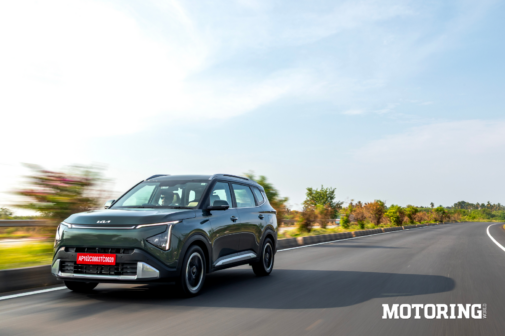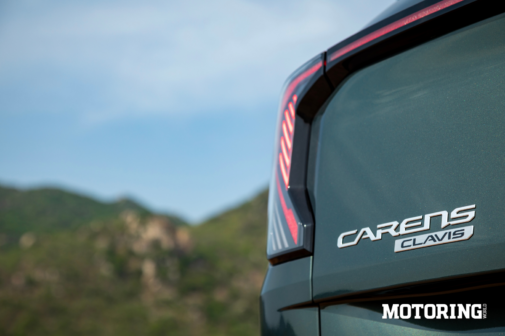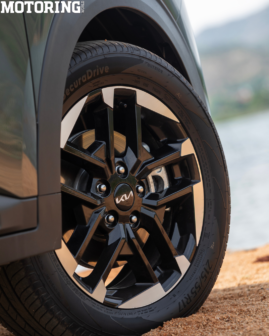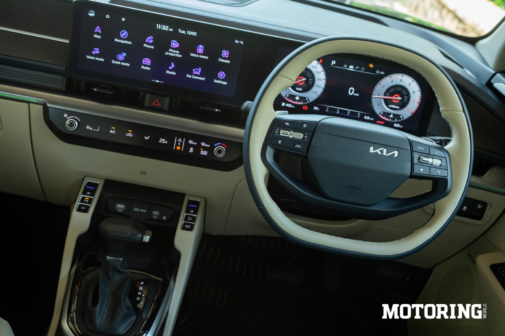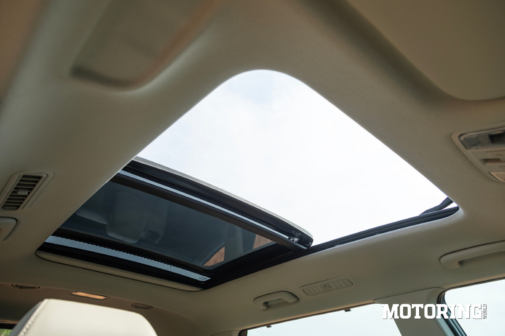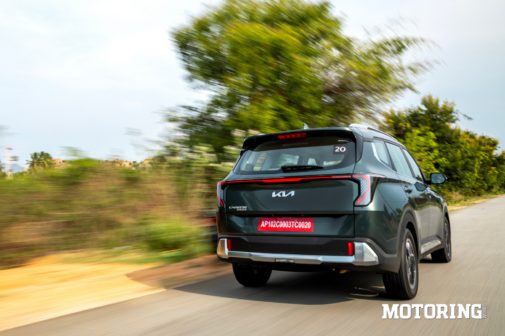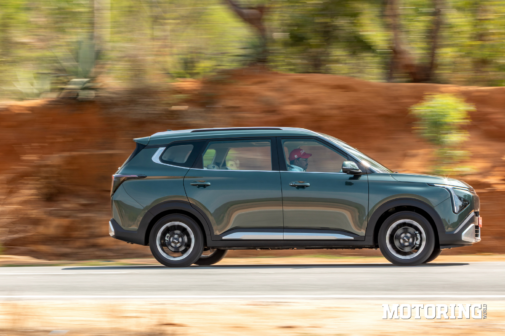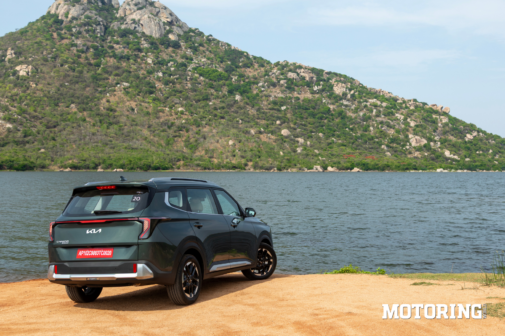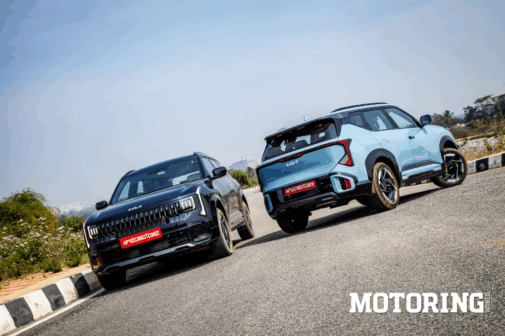The curse of the yellow number plate — it sounds like something straight out of a Harry Potter novel, doesn’t it? But in India, it’s a very real phenomenon. Once a car gets labelled as a fleet favourite, often thanks to its practicality and value-for-money proposition, it tends to be labelled for commercial use. And no matter how good it may be, once it’s draped in yellow, it loses appeal in private buyer circles. This has happened to segment stalwarts like the Toyota Innova, the Maruti Ertiga, and more recently, the Kia Carens.
The Carens, despite being a solid MPV with impressive space, frugal engines, and versatile seating, has slowly found itself becoming a darling of fleet operators. And that’s not a bad thing in itself — it’s a compliment to the product’s practicality. But for private buyers, that yellow plate stigma is real. Which is why Kia has decided to fight back. Their answer? The Carens Clavis — a more premium, stylish, and feature-loaded variant aimed squarely at the individual buyer.
To experience what makes the Clavis different, we travelled to the outskirts of Bangalore to put it through its paces. And right from the start, there’s a clear intent: this isn’t just a Carens with a few design changes. It’s a considered, calculated move to elevate the Carens into more aspirational territory.
Let’s begin with the name — ‘Clavis’. Latin for ‘key’, it’s Kia’s way of hinting that this version unlocks something more special. The full derivation, ‘clavis aurea’, means ‘golden key’—a fitting metaphor, even if you don’t actually get a golden key (just Kia’s usual quirky, well-designed key fob). The message is clear: this is your gateway to a more premium Carens experience.
Mechanically, the Clavis is the same size as the Carens — just 10mm longer, thanks to redesigned bumpers—but Kia has gone the extra mile to ensure it looks and feels different. Up front, it gets the brand’s new ‘digital tiger face’ design language, similar to what we’ve seen on the EV9. The minimalist front fascia, sleeker DRLs, and triangular headlamp housings lend it a more futuristic, EV-inspired aesthetic.
You also get silver-finished bash plates and angular bumper designs at both ends, which add a mild SUV-ish ruggedness. Along the side, there are new 17-inch dual-tone alloys and subtle cladding, while the rear sees a revised LED light bar with a thicker centre section, differentiating it from the standard Carens.
Our test car was finished in a deep Pewter Olive shade — essentially a rich olive green — that added a dash of adventure to the MPV’s personality. It’s understated, classy, and definitely helps the Clavis stand out in a sea of white fleet-spec Carens. That said, the ‘Clavis’ badging on the rear could’ve been more prominent; it’s currently too subtle to catch the eye.
Step inside, and the real transformation becomes obvious. The Clavis gets the same dual-screen layout seen in the updated Seltos — a slick 10.25-inch digital instrument cluster and an equally sized infotainment touchscreen that sit in a seamless glass panel. The dashboard features new materials and textures that move away from the gloss plastics of the standard Carens. There’s a real sense of sophistication here — more premium trims, better fit-and-finish, and cleaner integration of tech.
The AC vents have been redesigned, and the auto climate control panel feels more upmarket. The steering wheel is flat-bottomed and shared with the Kia Syros, and it feels nice in hand with tactile buttons, thankfully physical, not haptic, which operate the infotainment, cruise control, and even ADAS features. It’s a cabin that doesn’t just look better but feels more thoughtfully put together.
There are still a few quirks. Despite the dual-screen layout, wireless Apple CarPlay and Android Auto are missing. You’ll still need a USB-A cable to connect your phone, which feels like a miss in a car that otherwise nails modern connectivity. Also, a Type-C port would’ve made much more sense given how most users have moved on to the newer standard.
The Clavis retains the flexible 6- and 7-seat configurations of the Carens, and its packaging continues to be one of its strongest points. Legroom and headroom in all three rows are class-leading. Even the third row can accommodate adults for short stints without feeling claustrophobic — a rare feat in this segment.
One feature we loved was the one-touch tumble mechanism for the second row. It’s fast, manual (no waiting around for electric motors to do their thing), and makes access to the third row a breeze. Small touches like the physical rear AC fan speed dial and bottle holders in all rows remind you that this is an MPV engineered for real-world usability.
Perhaps the biggest physical addition to the Clavis is the panoramic sunroof — a first for the Carens platform. It floods the cabin with light and genuinely enhances the feeling of space, especially for middle-row passengers.
Under the hood, the Clavis retains the Carens’ wide range of powertrain options. There’s a 113 bhp 1.5-litre NA petrol, a 114 bhp 1.5-litre diesel, and a punchy 158 bhp 1.5-litre turbo-petrol. Gearbox options include a 6-speed manual and an iMT for the turbo petrol, a 7-speed DCT for the turbo petrol, and a 6-speed torque converter auto for the diesel. One of the key reasons this platform has been so successful is its ability to offer a wide range of permutations and combinations, allowing customers to choose the exact configuration that best suits their specific needs.
We drove the 1.5-litre diesel with a manual gearbox, and it felt superbly refined and efficient. The clutch is light, the gearbox smooth, and there’s ample torque low down, which makes city and highway driving effortless. We saw fuel efficiency figures touching 21kpl on long highway stretches, which is mighty impressive for a full-size MPV.
We also sampled the 1.5 turbo-petrol DCT variant. Power delivery is strong, though more top-end biased, and while refinement is good, it could be even better—some engine noise does creep into the cabin under hard acceleration. On the flip side, it’s a fun motor to drive, and the DCT gearbox is responsive and smooth. The Clavis offers a few drive modes – Normal, Eco, and Sport – but in Sport mode, it tends to hold onto gears a bit too long. For everyday driving, Normal mode strikes the right balance, while Eco is best suited for those looking to maximise fuel efficiency. If we had to pick the ideal variant, it would undoubtedly be the diesel paired with the automatic transmission — a combination that strikes the perfect balance between efficiency, ease of driving, and long-distance comfort, making it the most versatile and hassle-free option for both city commutes and highway runs.
Ride quality is where the Clavis truly impresses. Despite its size, it handles like a large hatchback. The suspension is well-tuned, soaking up bumps without feeling floaty, and the increased tyre size adds highway stability. Even at triple-digit speeds, it feels planted, composed, and confident. Around corners, body roll is well contained, and the steering feels light but predictable — perfect for family road trips.
The top-spec Clavis also adds a host of new features, including a 360-degree camera, ventilated front seats, and the biggest headline-grabber — Level 2 ADAS. This brings in features like adaptive cruise control, forward collision warning, lane keep assist, and more.
We tried out the ADAS suite on a relatively empty highway, and the system impressed with its accuracy and calibration. It kept the vehicle centred in the lane without any ping-pong effect and reacted predictably to bends and slow traffic. It’s not intrusive and adds a genuine layer of safety to long-distance driving.
The Kia Carens was already one of the most well-rounded MPVs in the market, offering unbeatable practicality, great ride comfort, and a range of engines. With the Clavis, Kia has taken that solid base and elevated it meaningfully. The styling tweaks, panoramic sunroof, digital cockpit, and ADAS tech combine to deliver a more polished and desirable experience, especially for personal buyers.
Most importantly, it helps the Carens shake off the yellow plate stigma. This is no longer just a workhorse MPV for fleet use. It’s now a legitimate lifestyle choice—an MPV you’d proudly park in your driveway. So, is the Clavis the ‘golden key’ to success for Kia? We’d say yes—it unlocks a new chapter in the Carens story.
AUTODATA
Kia Carens ClavisPOWERTRAIN
Displacement:
Max Power:
Max Torque:
Transmission:
1482 cc, petrol
157 bhp
25.69 kgm
7-speed AT
TYRES
F/R: 215/55 R17
DIMENSIONS
L/W/H (mm):
Wheelbase:
Ground Clearance:
Kerb Weight:
Fuel Capacity:
4550/1800/1708
2780 mm
220 mm
NA
45 litres
PRICE
TBA










